The bowling shot is a culmination of the sum of its parts. What happens on the lane is a direct result of everything that happened on the approach.
A bowler’s perspective alone cannot visually see problems in their game without the help of a coach or video.
In this article, we’ve broken down the most common problems beginners and advanced bowlers alike run into at one point or another in their bowling game.
1. Common problem: Ball start direction
One of the common problems that we’ve seen is the ball start direction out of the stance.
A lot of bowlers end up wrapping the swing around their body.
They aren’t mindful of the direction they are starting the ball out of the stance.
When bowlers struggle with this, they often want to guide the ball toward their target.
Sometimes it goes right, sometimes it goes left; but the goal is to consistently start the ball straight out of the stance to avoid errant shots.
In this example, Hailey Triske is holding the bowling ball too high and too far to the left.
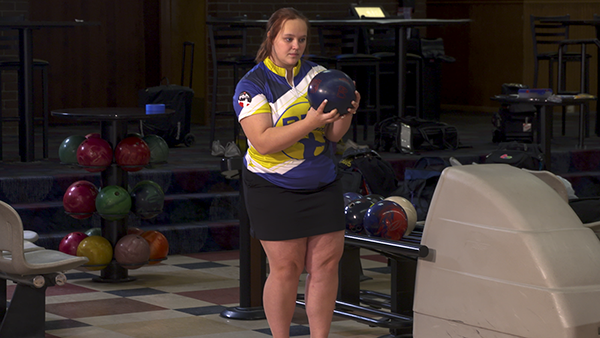
The placement of the bowling ball in the stance caused Hailey’s shot to miss right. The bowling ball looped around her body and ended up inside where a straight arm swing should occur.
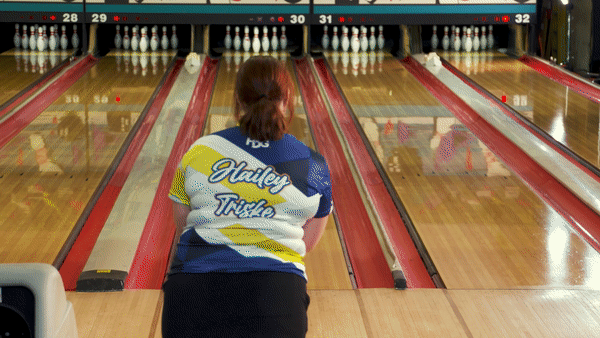
Good placement of the bowling ball in the stance is located under the chin and just above waist high. Check out more on how to hold the bowling ball in this video.
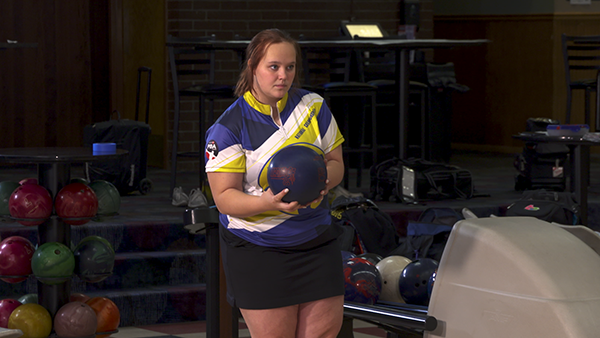
This is the first phase in creating a straight arm swing.
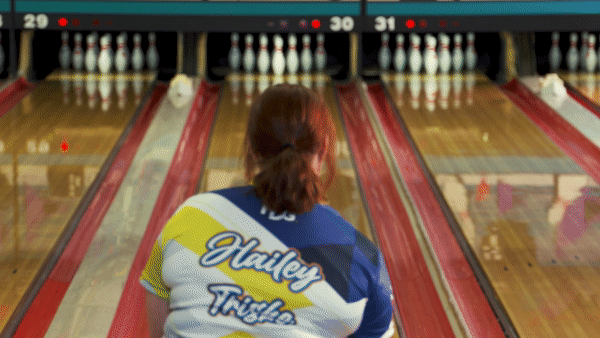
One way to correct this issue is to have your coach or teammate set up alongside you with a hockey stick.
You can use a yardstick, pool noodle, your hand, or grab a menu from the settee.
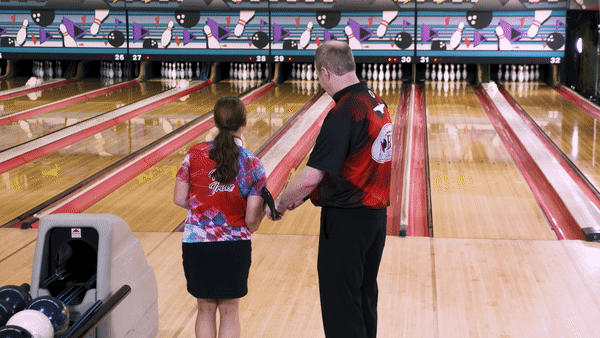
Have the bowler walk through their approach and throw a shot.
This gives the bowler immediate feedback on what a straight arm swing should feel like and look like down the lane.
2. Common problem: Footwork and Arm Swing
Have you ever been told to “walk straight” on the approach? Like most bowlers, you probably think you are walking straight until someone tells you that you’re not.
It might seem like a silly question, but how do you walk straight and why is it important?
The goal is a straight arm swing. Achieving a straight arm swing makes hitting your target more consistent.
When setting up in the stance, the ball needs to be between your chin and shoulder.
Your shoulders, hips, and feet need to match the launch angle you are trying to create down the lane.
When starting the ball out of the stance, the ball needs to clear your hip. There are two ways this can happen; you move your hip to avoid the ball hitting you or you move the ball around your hip.
You want to move your hip out of the way of the ball to avoid the ball hitting you because moving the ball around your hip will create an erratic arm swing that is not repeatable.
If you tried to walk straight up the 20th board on the approach, would you walk normally with one foot next to the other or would you walk it like a tightrope, one foot in front of the other?v
Walking the tightrope will get your feet walking straight toward your intended target. Placing painters’ tape on the approach is a good way to practice the crossover step.
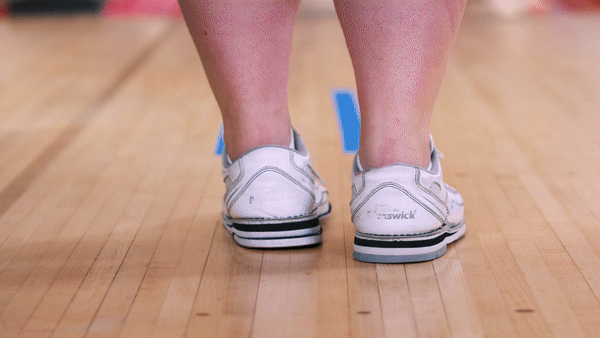
The trail foot crosses over in front of the slide foot during the approach. For a five-step bowler, the crossover step is the second step. For a four-step bowler, the crossover step is the first step.
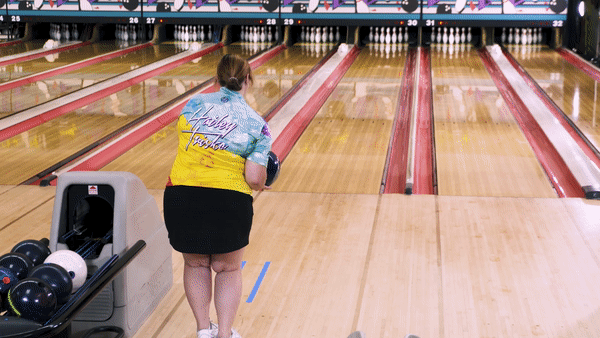
Remember, the goal is to get the ball into a straight path all the way through to the arm swing.
Repeating this every time you bowl will improve your accuracy and your scores will increase too.
3. Common problem: Not utilizing the lower body
To achieve balance at the foul line, your trail leg needs to be in good position. If it’s out of position, your hips will stay open, and you could potentially fall off the shot. This results in missing your target down lane.
The trail leg’s heel and toe needs to be positioned properly for optimum balance and leverage. This is a relationship every bowler needs to examine, but also continually train.
After the ball starts in your approach, it passes your hip. At this point, your hips are open. As you exit your pivot or power step, the position of the trail leg foot will determine how your lower body will respond.
So, when you’re at the lanes training and you want to work on your trailing foot’s position, grab an empty bowling ball box and place it near the foul line.
If your heel faces the wall or it is perpendicular to the approach, your hips will remain open, and you will lose balance, leverage, and stability in the finish position. This will negatively impact your release and ball motion.
When the lower body is engaged and your hips are closed in the finish position, your toes and heel are parallel to the approach. The toes will face the pins, the heel faces the wall, and both are as close as possible to being parallel to the floor.
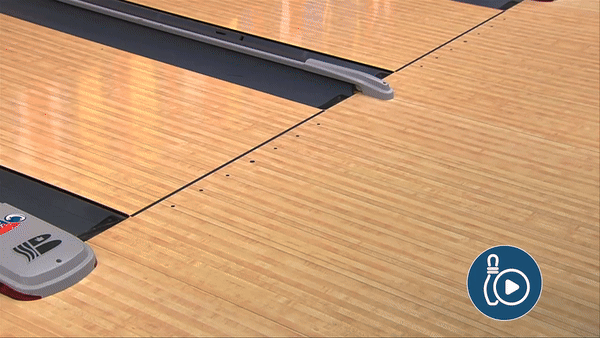
If the trail leg is separated from the rest of your body, your hips will be open in the finish position.
The goal is to close the hips to achieve balance and leverage so that you can watch your ball hit the target. Your fingers at the point of release will be under the ball and the ball will be closer to your slide leg’s ankle during the release, maximizing leverage.
4. Common problem: Overextend the trailing leg
When you overextend the trail leg, your hips pull and this results in a change of direction to your intended launch angle. The result? Missing your target.
Another way you can utilize the empty bowling ball box is to use it as an indicator to stop the trail leg from overextending.
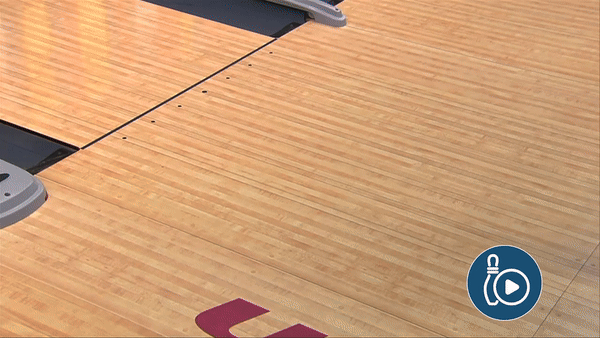
So, if you hit the box, it’s immediate feedback telling you to cease extending your trail leg.
That concludes common problems bowlers face and the solutions you should try.
At some point in time, every bowler faces these problems and not just once; these problems occur multiple times throughout the bowling journey.
The best way to keep up a good, fundamentally-sound physical game is to train these common problems with regularity.
Share tips, start a discussion or ask other students a question. If you have a question for the instructor, please click here.
Already a member? Sign in
No Responses to “4 Common Problems Bowlers Face and Solutions to Try”